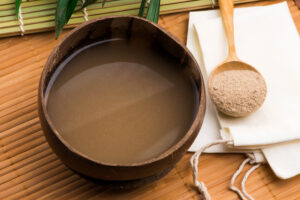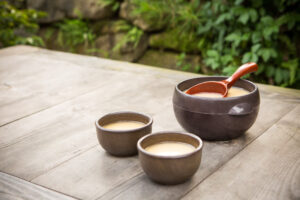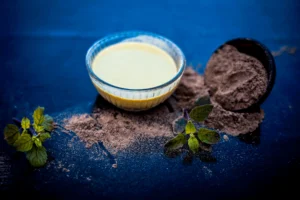Kava, the traditional Pacific Island beverage renowned for its relaxing properties, has been gaining popularity worldwide. As interest in this ancient drink grows, so does the experimentation with various preparation methods. While traditionally mixed with water, Kava enthusiasts have discovered that using different liquids can not only alter the flavor profile but potentially enhance its effects. In this comprehensive guide, we’ll explore the various liquids you can use to prepare Kava, with a special focus on some intriguing alternatives.
Water: The Traditional Foundation
Water has been the go-to liquid for Kava preparation for centuries. Its neutrality allows the true essence of Kava to shine through, providing an unadulterated experience of the root’s earthy, sometimes peppery flavor. When using water, the Kava’s natural taste and effects are front and center, making it the purist’s choice. However, for those new to Kava or seeking to mask its distinct flavor, water might not be the most palatable option.
Coconut Milk: A Tropical Enhancer
In many Pacific Island cultures, coconut milk has long been a favored alternative to water in Kava preparation. This creamy, rich liquid adds a delightful tropical twist to the beverage, smoothing out Kava’s earthy notes with its natural sweetness. But the benefits of coconut milk go beyond flavor enhancement.

Try our kava drinks, all delicious
Many Kava drinkers report that using coconut milk intensifies the effects of the beverage. This phenomenon is believed to be linked to the high-fat content of coconut milk. Kavalactones, the active compounds in Kava responsible for its effects, are fat-soluble. This means they dissolve more readily in fats than in water. Consequently, the fats in coconut milk may facilitate a more efficient extraction of kavalactones from the Kava root, potentially resulting in a more potent drink.
Almond Milk: The Modern Contender
As plant-based diets gain traction globally, almond milk has emerged as another popular mixer for Kava. Like coconut milk, almond milk is believed to intensify Kava’s effects, likely due to its fat content. While not as rich as coconut milk, almond milk still contains enough fats to potentially enhance the extraction of kavalactones.
Almond milk offers a unique nutty flavor profile that complements Kava’s earthy taste. It’s a lighter option compared to coconut milk, making it a favorite among those who find coconut milk too rich or heavy. Moreover, almond milk is a suitable alternative for those with coconut allergies or those following specific dietary regimens.
Other Plant-Based Milks: Expanding the Palette
The world of plant-based milks extends far beyond coconut and almond. Soy milk, oat milk, cashew milk, and even hemp milk have all found their way into Kava preparations. Each of these alternatives brings its unique flavor profile and potential benefits:
Soy milk: High in protein and with a creamy texture, soy milk can provide a smooth Kava experience.
Oat milk: Known for its natural sweetness, oat milk can help mellow out Kava’s strong flavor.
Cashew milk: With a rich, buttery taste, cashew milk can add depth to your Kava drink.
Hemp milk: Offering a nutty flavor and rich in omega-3 fatty acids, hemp milk could potentially enhance both the taste and the benefits of Kava.
Fruit Juices: A Sweet Disguise
For those who find Kava’s taste challenging, fruit juices can serve as an excellent mixer. Tropical fruit juices like pineapple, mango, or passion fruit not only mask Kava’s earthy flavor but also complement its Pacific Island origins. The natural sugars in these juices can make the Kava experience more palatable for beginners. However, it’s worth noting that while fruit juices can improve the taste, they may not enhance Kava’s effects in the same way that fatty liquids do. The lack of fat content means that kavalactones may not be extracted as efficiently. Additionally, the high sugar content of some fruit juices might not align with everyone’s dietary preferences.
Herbal Teas: Synergistic Blends
Mixing Kava with herbal teas opens up a world of possibilities for creating synergistic blends. Some popular options include:
Chamomile tea: Known for its calming properties, chamomile can complement and potentially enhance Kava’s relaxing effects.
Peppermint tea: The cool, refreshing flavor of peppermint can provide an interesting contrast to Kava’s earthiness.
Lavender tea: Another herb known for promoting relaxation, lavender can create a soothing Kava blend.
Ginger tea: For those who enjoy a bit of spice, ginger can add a warming kick to your Kava drink.
When using herbal teas, it’s important to consider potential interactions. While most herbal teas are safe to combine with Kava, it’s always wise to research or consult with a healthcare professional about specific combinations.
The Science Behind Enhanced Effects
The reported intensification of Kava’s effects when mixed with fatty liquids like coconut or almond milk is rooted in the chemistry of kavalactones. These compounds are lipophilic, meaning they have an affinity for fats. When Kava is prepared with a fatty liquid, the kavalactones can be more efficiently extracted from the root material and may be more readily absorbed by the body. This phenomenon is similar to the reason why some medications or supplements are recommended to be taken with food. The presence of fats can enhance the absorption of certain compounds in the digestive system.
While water remains the most traditional and straightforward mixer for Kava, the world of alternative liquids offers exciting possibilities for enhancing both the flavor and potentially the effects of this ancient beverage. From the rich creaminess of coconut milk to the light nuttiness of almond milk, from the sweetness of fruit juices to the complementary benefits of herbal teas, there’s a Kava preparation method to suit every palate and preference.
As you explore these options, remember that everyone’s experience with Kava can be different. It’s always advisable to start with smaller amounts when trying new preparation methods. Pay attention to how your body responds to different mixers and adjust accordingly. As with any dietary supplement, consume Kava responsibly and be aware of its effects on your body. Ultimately, the choice of liquid for your Kava preparation is a personal one, influenced by taste preferences, dietary considerations, and desired effects. Don’t be afraid to experiment and find the perfect Kava mix that works for you.




